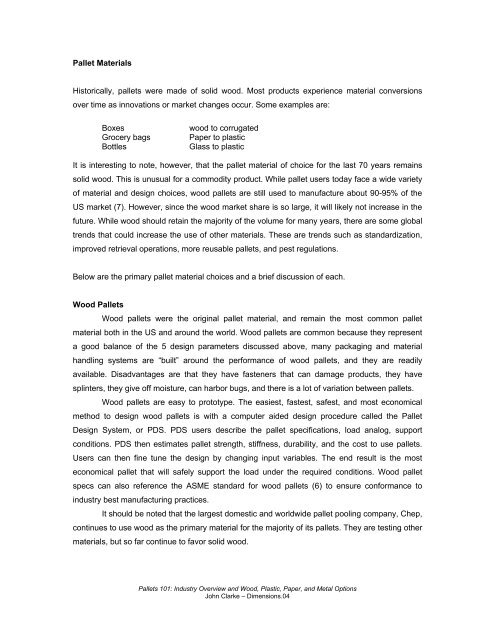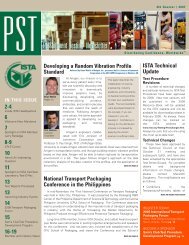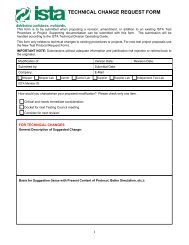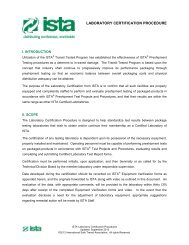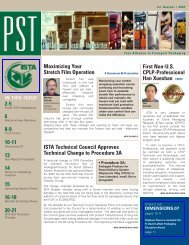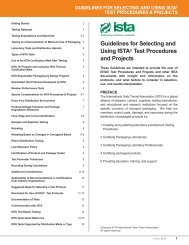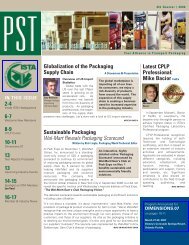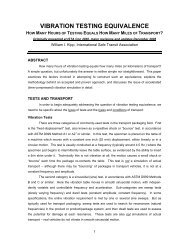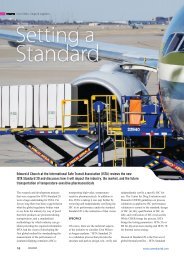Pallets 101: Industry Overview and Wood, Plastic, Paper & Metal ...
Pallets 101: Industry Overview and Wood, Plastic, Paper & Metal ...
Pallets 101: Industry Overview and Wood, Plastic, Paper & Metal ...
You also want an ePaper? Increase the reach of your titles
YUMPU automatically turns print PDFs into web optimized ePapers that Google loves.
Pallet MaterialsHistorically, pallets were made of solid wood. Most products experience material conversionsover time as innovations or market changes occur. Some examples are:BoxesGrocery bagsBottleswood to corrugated<strong>Paper</strong> to plasticGlass to plasticIt is interesting to note, however, that the pallet material of choice for the last 70 years remainssolid wood. This is unusual for a commodity product. While pallet users today face a wide varietyof material <strong>and</strong> design choices, wood pallets are still used to manufacture about 90-95% of theUS market (7). However, since the wood market share is so large, it will likely not increase in thefuture. While wood should retain the majority of the volume for many years, there are some globaltrends that could increase the use of other materials. These are trends such as st<strong>and</strong>ardization,improved retrieval operations, more reusable pallets, <strong>and</strong> pest regulations.Below are the primary pallet material choices <strong>and</strong> a brief discussion of each.<strong>Wood</strong> <strong>Pallets</strong><strong>Wood</strong> pallets were the original pallet material, <strong>and</strong> remain the most common palletmaterial both in the US <strong>and</strong> around the world. <strong>Wood</strong> pallets are common because they representa good balance of the 5 design parameters discussed above, many packaging <strong>and</strong> materialh<strong>and</strong>ling systems are “built” around the performance of wood pallets, <strong>and</strong> they are readilyavailable. Disadvantages are that they have fasteners that can damage products, they havesplinters, they give off moisture, can harbor bugs, <strong>and</strong> there is a lot of variation between pallets.<strong>Wood</strong> pallets are easy to prototype. The easiest, fastest, safest, <strong>and</strong> most economicalmethod to design wood pallets is with a computer aided design procedure called the PalletDesign System, or PDS. PDS users describe the pallet specifications, load analog, supportconditions. PDS then estimates pallet strength, stiffness, durability, <strong>and</strong> the cost to use pallets.Users can then fine tune the design by changing input variables. The end result is the mosteconomical pallet that will safely support the load under the required conditions. <strong>Wood</strong> palletspecs can also reference the ASME st<strong>and</strong>ard for wood pallets (6) to ensure conformance toindustry best manufacturing practices.It should be noted that the largest domestic <strong>and</strong> worldwide pallet pooling company, Chep,continues to use wood as the primary material for the majority of its pallets. They are testing othermaterials, but so far continue to favor solid wood.<strong>Pallets</strong> <strong>101</strong>: <strong>Industry</strong> <strong>Overview</strong> <strong>and</strong> <strong>Wood</strong>, <strong>Plastic</strong>, <strong>Paper</strong>, <strong>and</strong> <strong>Metal</strong> OptionsJohn Clarke – Dimensions.04


